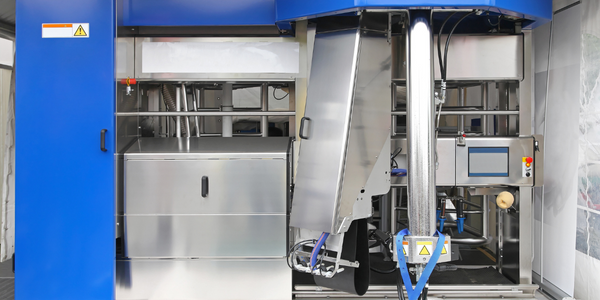Customer Company Size
Large Corporate
Region
- Europe
Country
- Germany
Product
- Camunda
- Camunda Optimize
- Camunda Cockpit
Tech Stack
- BPMN 2.0
Implementation Scale
- Enterprise-wide Deployment
Impact Metrics
- Cost Savings
- Customer Satisfaction
- Productivity Improvements
Technology Category
- Application Infrastructure & Middleware - API Integration & Management
Applicable Functions
- Business Operation
Use Cases
- Process Control & Optimization
- Predictive Quality Analytics
Services
- System Integration
About The Customer
SV Informatik GmbH is an innovative systems supplier that provides tailor-made IT solutions to make property and life insurers fit for the future. The company employs 450 people across 5 locations and is a wholly owned subsidiary of SV SparkassenVersicherung, one of the largest public insurers in Germany with 5000 employees. This means SV Informatik has a deep understanding of the insurance industry – from product development and IT operations to sales and partners.
The Challenge
SV Informatik, a provider of custom IT solutions for insurance companies, was in search of a new modeling tool for business processes. They needed a solution that would allow for process documentation, partial automation, and closer cooperation between the specialist area and IT. The company also faced challenges in handling mass loss events, such as storms, which could result in thousands of damage reports within a few days. These reports had to be manually transferred to the relevant insurance system, a process that was time-consuming and inefficient.
The Solution
SV Informatik introduced Camunda, a BPMN 2.0 based engine, to automate numerous processes across divisions. The implementation of Camunda resulted in significant time savings and improved customer experience. The company created a new team, SQUAD, which consisted of subject matter experts, IT specialists, and process designers who automate processes from start to finish in a workshop format. This method facilitated short development cycles and rapid value creation. The first processes to be automated successfully were the partially automated support for cancellation of motor vehicle insurance policies and several self-services such as changing an address and requesting a copy of policy and invoice documents. The company also automated the process of online reporting of storm damage, which resulted in 80% of the claims created via the website being forwarded for further processing without the intervention of a claim’s handler.
Operational Impact
Quantitative Benefit

Case Study missing?
Start adding your own!
Register with your work email and create a new case study profile for your business.
Related Case Studies.

Case Study
System 800xA at Indian Cement Plants
Chettinad Cement recognized that further efficiencies could be achieved in its cement manufacturing process. It looked to investing in comprehensive operational and control technologies to manage and derive productivity and energy efficiency gains from the assets on Line 2, their second plant in India.

Case Study
Airbus Soars with Wearable Technology
Building an Airbus aircraft involves complex manufacturing processes consisting of thousands of moving parts. Speed and accuracy are critical to business and competitive advantage. Improvements in both would have high impact on Airbus’ bottom line. Airbus wanted to help operators reduce the complexity of assembling cabin seats and decrease the time required to complete this task.

Case Study
Improving Production Line Efficiency with Ethernet Micro RTU Controller
Moxa was asked to provide a connectivity solution for one of the world's leading cosmetics companies. This multinational corporation, with retail presence in 130 countries, 23 global braches, and over 66,000 employees, sought to improve the efficiency of their production process by migrating from manual monitoring to an automatic productivity monitoring system. The production line was being monitored by ABB Real-TPI, a factory information system that offers data collection and analysis to improve plant efficiency. Due to software limitations, the customer needed an OPC server and a corresponding I/O solution to collect data from additional sensor devices for the Real-TPI system. The goal is to enable the factory information system to more thoroughly collect data from every corner of the production line. This will improve its ability to measure Overall Equipment Effectiveness (OEE) and translate into increased production efficiencies. System Requirements • Instant status updates while still consuming minimal bandwidth to relieve strain on limited factory networks • Interoperable with ABB Real-TPI • Small form factor appropriate for deployment where space is scarce • Remote software management and configuration to simplify operations

Case Study
Developing Smart Tools for the Airbus Factory
Manufacturing and assembly of aircraft, which involves tens of thousands of steps that must be followed by the operators, and a single mistake in the process could cost hundreds of thousands of dollars to fix, makes the room for error very small.









